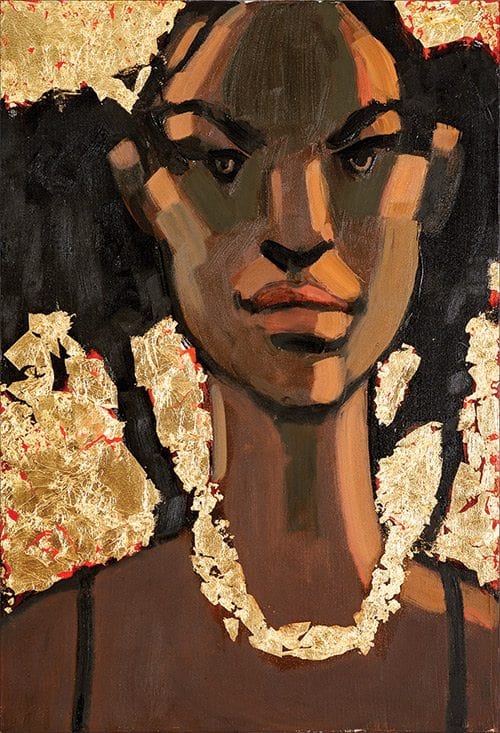
Robert Freeman has been a standard in the Boston art scene since he moved here in the 1960s. His show “New Work” at Adelson Galleries proves that his art is as vibrant and relevant as ever. On view until Dec. 18, the show expands on the material from his well-known series “Black Tie,” with a few extra surprises.
On the web
“New Work” at Adelson Galleries, http://adelsongalleriesboston.com/
“New Work” features a series of oil paintings with the movement and power of a jazz concert. They depict a social world, cocktail parties, dinners, dancing. But despite the lighthearted activities shown, the paintings have a darker edge to them. Most of his characters engage directly with the viewer, staring us down. This confrontational component brings to light the dynamic of exclusion and inclusion between black and white social circles. “I think inclusiveness in our society is still in question,” says Freeman. “We still live in a very segregated world.”
Freeman’s goal in “Black Tie” was to show the social circles created by the new group of middle class African Americans of the ’50s and ’60s. Prejudice prevented them from socializing within white circles, but they modeled their own versions of what they saw. The subject matter was particularly poignant at the opening reception, where Freeman hosted an integrated audience of art lovers of all races comingling among the paintings. That brought layered meaning to the work. Freeman says, “Without someone in front of the paintings, they are incomplete.”
The statement piece of the exhibit is a large triptych called “The Sundowners.” Painted in moody blacks and grays, the piece takes on a more somber tone than the rest of the show. The partygoers look up from their fun as if to ask the viewer, “What are you doing here?” Freeman says the piece was inspired by the cheeky edge of Edvard Munch’s paintings. The flashy orange of one dancer’s fingernails reminds the audience that this piece, though darker than most, is Freeman through and through.
A marked difference from the “Black Tie” series is the use of gold leaf on a number of the paintings. Freeman says the gold was inspired by his West African homeland. In “Golden Necklace 8,” he paints a close-up portrait of a woman with a lavish gold necklace. The gold leaf represents warmth, loyalty and the sun. In this way Freeman brings a celebratory component to the study of race relations, a glorification of black bodies and culture.
Though Freeman has struggled as a black artist in Boston, he also has become part of the change. Four of his paintings were donated to The Museum of Fine Arts for their permanent collection, and he sits as an honorary overseer on their committee that represents African American artists. More and more galleries are following in Adelson’s footsteps and opening their doors to more diverse creators. Freeman is happy with this change, but his focus is first and foremost on his art.
“I’ve found painting to be very agreeable,” he says. “I can’t say what I’ll do next, but I’m excited to do it.”






